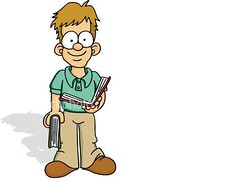Wireless technologies -WiMax, Bluetooth, UWB, WPA2, 3G, 4G, 3GPP, Wi-Media, Wireless switches to mobile VoIP, IMS etc- will have a huge impact on library services in the coming years.
Wi-Fi standards has seen an exponential growth in recent times
802.11e:IEEE standard belongs to the WLAN cadre, and is aimed at improving audio and video streaming over Wi-Fi networks.
3G: will provide the ability to transfer both voice and data (e.g Video telephony). Data transfer can achieve upto 3Mbps
4G: Data transfer rate upto 100Mbps (moving) 1Gbps (stastionary). Internet Telephony over mobiles or Mobile IP to offer wireless network anywhere. (e.g skype offering VoIP, Nokia 6136 uses UMA(Unlicensed Mobile Access)
WiMax: Speeds of 75 Mbps and range of 50 kms to connect wirelessly.
802.11n: latest ratified wireless standards set to enable speeds in excess of 100 Mbps
OMA-DS: Data Synchronization technology that can let your administrator audit and configure mobile devices remotely. New avtaar of the SyncML standard.
More information on wireless technologies: http://www.winlab.rutgers.edu/pub/Links.html
New Services in Library:
i) SMS: SMS query, SMS catalogue search, Reserve book through SMS, Read e-books, Personalised information services.
ii) Fee based Information Services: Pre-paid Information Services, Post-paid Information services.
iii) Real time Information services
iv) LIC (library and Information center) call centers –provide 24x7 services to their clientele.
v) Live Reference(with help of Video telephony): live chat with
Reference librarian.
Live examples:
http://www2.selu.edu/Library/ServicesDept/referenc/textalibrarian.html
http://www.oli.tafe.qld.gov.au/library/contact/sms.html
http://www.altarama.com.au/refxsms.htm
http://library.curtin.edu.au/contact/sms.html
Wi-Fi standards has seen an exponential growth in recent times
802.11e:IEEE standard belongs to the WLAN cadre, and is aimed at improving audio and video streaming over Wi-Fi networks.
3G: will provide the ability to transfer both voice and data (e.g Video telephony). Data transfer can achieve upto 3Mbps
4G: Data transfer rate upto 100Mbps (moving) 1Gbps (stastionary). Internet Telephony over mobiles or Mobile IP to offer wireless network anywhere. (e.g skype offering VoIP, Nokia 6136 uses UMA(Unlicensed Mobile Access)
WiMax: Speeds of 75 Mbps and range of 50 kms to connect wirelessly.
802.11n: latest ratified wireless standards set to enable speeds in excess of 100 Mbps
OMA-DS: Data Synchronization technology that can let your administrator audit and configure mobile devices remotely. New avtaar of the SyncML standard.
More information on wireless technologies: http://www.winlab.rutgers.edu/pub/Links.html
New Services in Library:
i) SMS: SMS query, SMS catalogue search, Reserve book through SMS, Read e-books, Personalised information services.
ii) Fee based Information Services: Pre-paid Information Services, Post-paid Information services.
iii) Real time Information services
iv) LIC (library and Information center) call centers –provide 24x7 services to their clientele.
v) Live Reference(with help of Video telephony): live chat with
Reference librarian.
Live examples:
http://www2.selu.edu/Library/ServicesDept/referenc/textalibrarian.html
http://www.oli.tafe.qld.gov.au/library/contact/sms.html
http://www.altarama.com.au/refxsms.htm
http://library.curtin.edu.au/contact/sms.html

No comments:
Post a Comment